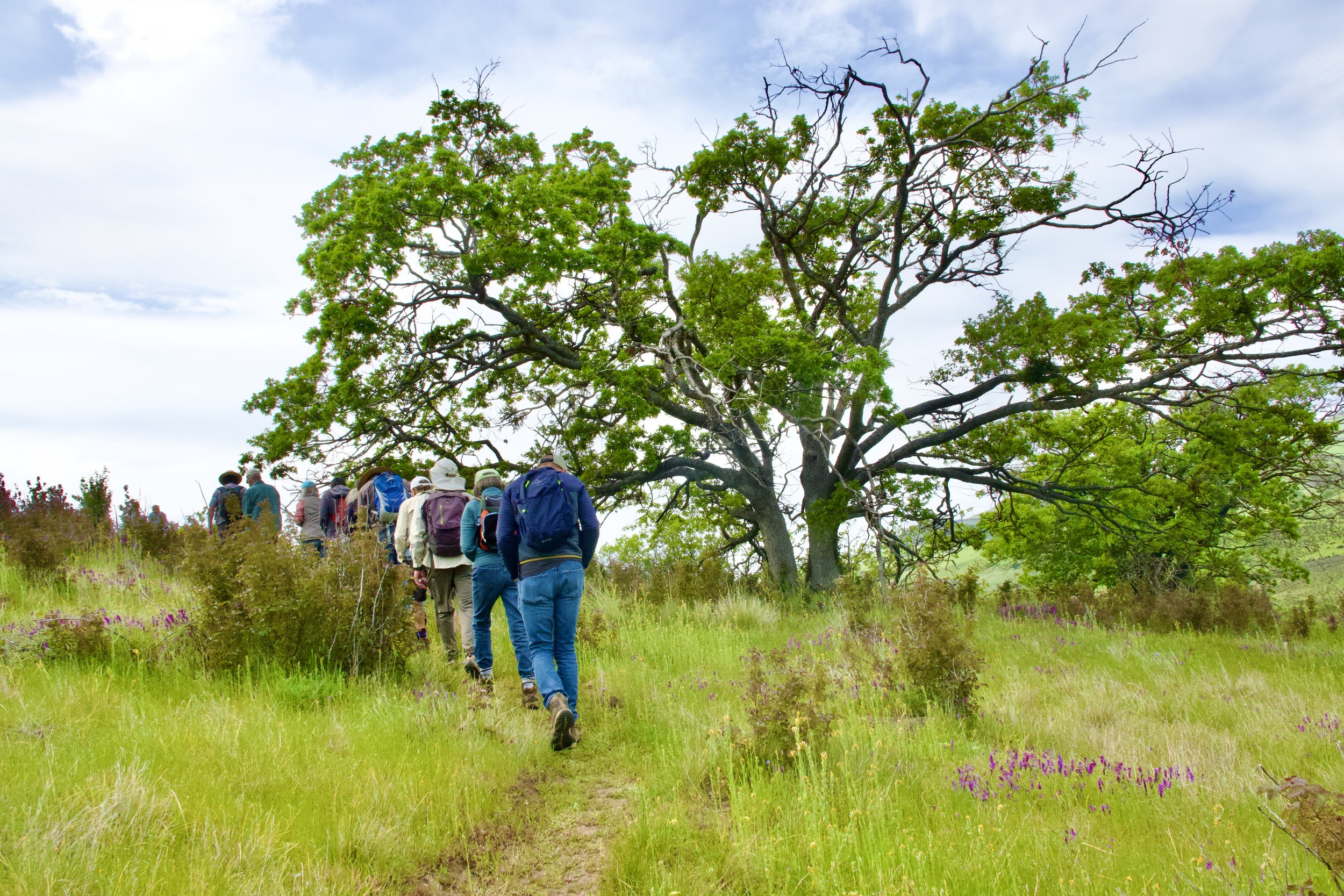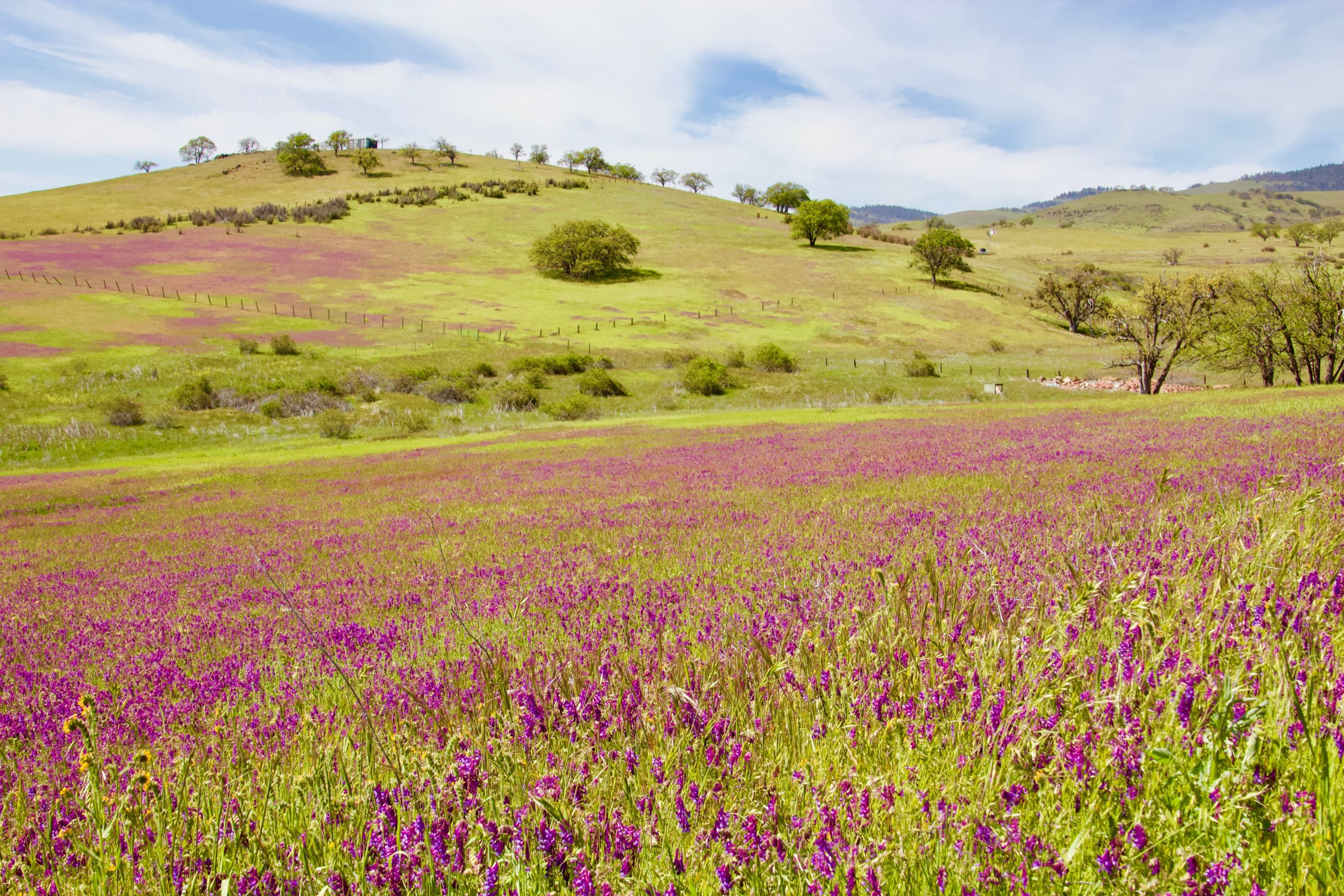What's so special about shrimp anyway?
The Good, the Bad, and... the Unusual
An excerpt from our monthly eNews column. This November 2016 edition was written by Karen Hussey, Southern Oregon Land Conservancy Land Steward.
A male vernal pool fairy shrimp (Branchinecta lynchi). Photo: Vic Smith,California Academy of Sciences
What has 11 sets of legs, two sets of antennae, swims upside down, and is responsible for flamingos being pink? Fairy shrimp! Yes, fairy shrimp are REAL and they live right here in Southern Oregon! Here is the good, the bad, and the unusual of fairy shrimp:
The Good:
First and foremost, these critters are cool! Fairy shrimp, which are cousins to lobster, crab, and shrimp, have incredible features packed into tiny bodies. They typically range in size from 11-25 mm (perhaps the size of your fingernail), but the world’s largest species, which also occurs in Oregon, can grow to SIX inches! Fairy shrimp live in temporary bodies of water and can quickly grow, reproduce, and lay eggs before the water dries up. They are an important food source for ducks and shorebirds, especially during migration. Oregon is home to 14 species of fairy shrimp. In Southern Oregon fairy shrimp exist in special habitats such as the Table Rocks and Agate Desert, a grassland habitat dotted with vernal pools between Medford and Shady Cove.
The Bad:
Here in Southern Oregon and in other areas around the world, fairy shrimp have lost a whole lot of their habitat and, as a result, some species have become endangered. The Agate Desert has lost at least 80% of its ecologically functional habitat, mostly due to development, followed by leveling the ground and filling the vernal pools for farming. Although development and land leveling are not compatible with fairy shrimp, grazing if done carefully, can co-occur and in some cases may even be beneficial to the shrimp. The Agate Desert supports two species of fairy shrimp – the Oregon Fairy Shrimp, and the Vernal Pool Fairy Shrimp which has become a federally threatened species. Because of its special wildlife and plant species, Southern Oregon Land Conservancy is working to protect the remaining intact areas of the Agate Desert. SOLC currently protects 170 acres of vernal pool habitat in the Agate Desert and is working on protecting a large property along the Rogue River that supports more functioning vernal pool habitat.
The Unusual:
What ISN’T unusual about fairy shrimp?! Fairy shrimp bodies are fragile but their eggs are astonishingly hardy. Fairy shrimp eggs survive months of drying, extreme temperatures, and even a trip through a duck’s digestive track. Eggs have been known to survive temperatures as hot as 210F and as cold as -310F! Scientists have successfully hatched 400-year old eggs, and in 1980, some lucky jet-setting eggs even survived a trip to space! And let’s not forget to explain the flamingos: Flamingos get their pink color from eating fairy shrimp that contain pigments called carotenoids. Otherwise, their feathers would be gray or white. Cool stuff!
Molly Morison is the Southwest Oregon Stewardship Coordinator for The Nature Conservancy. She also has a US Fish and Wildlife permit to survey and identify fairy shrimp.

![What's so special about shrimp anyway? [VIDEO]](https://images.squarespace-cdn.com/content/v1/565cf1d6e4b0df45d8c1bb69/1479928140094-D2235DYTBKYA6VHL5P10/RRP_VernalPoolSurvey_Jan2016_TF+%2823%29.JPG)









